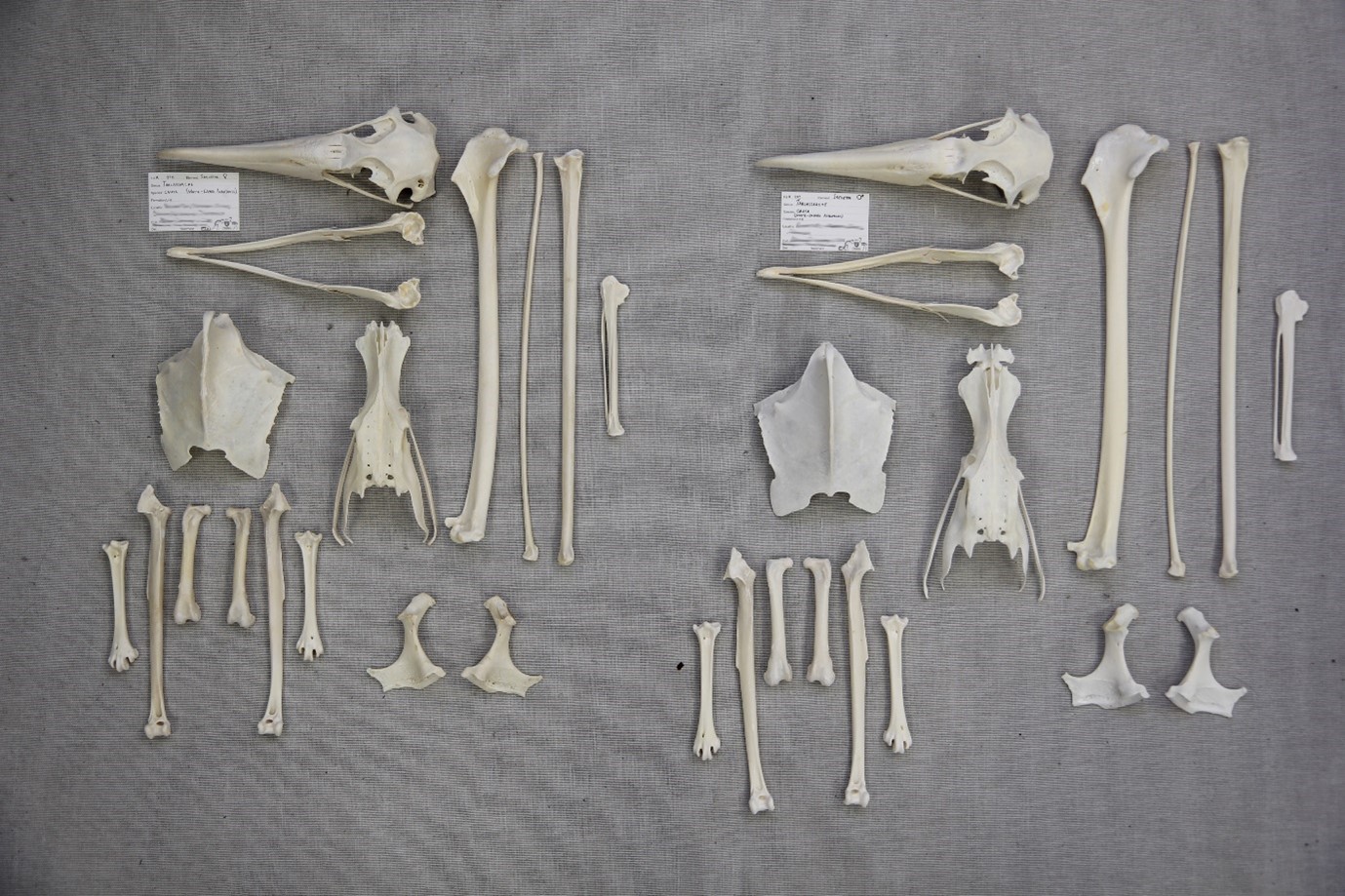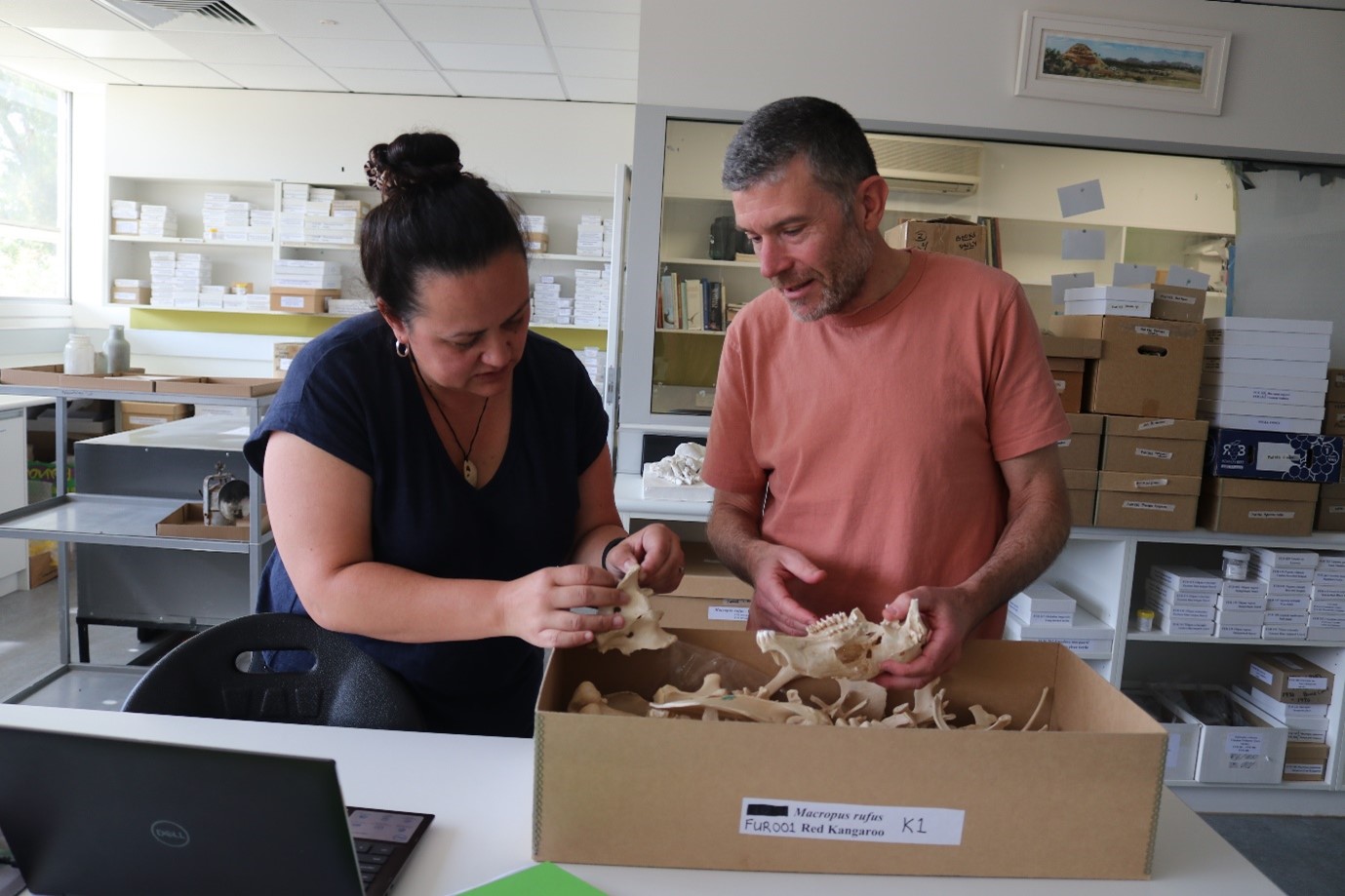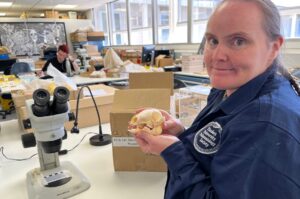
An expert assessment of Flinders University Palaeontology’s extensive vertebrate collection has been done with support from a $7250 Community Heritage Grant (CHG).
The Flinders University Vertebrate Collection features skulls and skeletons from more than 1,500 specimens representing more than 200 species of birds, reptiles, amphibians and mammals.
The assessment by expert conservator Erina McCann, from Tiaki Object Conservation, helped to highlight the importance of a number of rare specimens not found in other Australian collections.
Ms McCann assessed the collection’s scientific as well as historical significance, with some specimens associated with prominent Australian scientists such as palaeontologists Dr Thomas H Rich and Professor Patricia Vickers-Rich, South Australian herpetologist (frog expert) Associate Professor Michael Tyler and Flinders Palaeontology Emeritus Professor Rod Wells, who was instrumental in discovering the World Heritage Listed fossil deposits at the Naracoorte Caves.

Collection Manager Lisa Nink says CHG funding has been vital in confirming the importance of this resource, which is curated and managed by volunteers.
“Natural history collections are invaluable resources for studying the past, present and future of our natural world,” she says.
“This collection contains some amazing specimens and this significant assessment has helped us better understand the collection’s value and uniqueness relative to other natural history collections.
“This will better enable us to promote and encourage use of our collection for research, reference and education.”

Highlights of the collection include more than 700 complete and partial skulls of kangaroo species from across Australia, a large collection of skulls and jaws of the threatened southern hairy-nosed wombat from South Australia and rare examples of foreign species. Two notable specimens are a pair of albatross skeletons found on Kangaroo Island.
“The skeletons of these birds, a male and a female were found together. This species is Australia’s only endemic albatross and it breeds on just three islands off Tasmania,” says Miss Nink.
“Although it isn’t unusual to observe them foraging for food in waters off Kangaroo Island, it is unusual to find what was apparently a breeding pair together on the island’s coast.”
“The FUVC is a fantastic resource for everyone – whether you’re a researcher, an artist, a student, interested in natural history or would like to try and figure out that bone you found on the beach.”
Contact Flinders Palaeontology on fuplcollections@gmail.com with any enquiries or to book an appointment to visit at the collection at the main Flinders University campus at Bedford Park.
The Community Heritage Grant program is funded by the Australian Government through the National Library of Australia, Department of Communications and the Arts, National Archives of Australia and the National Film and Sound Archive and National Museum of Australia and managed by the National Library of Australia.

